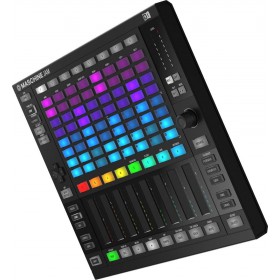
Roland would later refine and simplify this approach into the GR-300, used in the early ’80s by such notable electric guitarists as Andy Summers of the Police, Robert Fripp and Adrian Belew of King Crimson, Jimmy Page, and Pat Matheny. The Roland GR-500 in turn was plugged into a module that resembled Data’s control station on the bridge of Star Trek: The Next Generation. The guitar also featured the first iteration of Roland’s breakthrough hexophonic pickup, which unlike the mono electric guitar pickups of the 1950s designed by men such as Leo Fender and Gibson’s Seth Lover, fed the output from each string to separate outputs of a multipin-equipped cable, allowing for polyphonic synthesizer control. While the body of the GR-500 was shaped much like Gibson’s best-selling Les Paul electric guitar, the GR-500 was a far more complex beast, with seven dials on the guitar for various sounds, along with eight toggle switches. In 1977, the Roland corporation of Japan, which has long been at the forefront of integrating music and technology introduced the GR-500, first commercially available guitar synthesizer. (Skip down to the next subhead if all of this is old hat to you.) With the MASCHINE 2.6 update, MASCHINE JAM now lets you use 16 fixed velocity levels for fast programming in step mode.A Quick Overview of the Frustrating Last Four Decades Of Guitar Synthesizers Start fine-tuning your patterns directly with the MASCHINE JAM controller – change a note’s pitch, velocity, length, or swing via the step sequencer. With MASCHINE 2.6 software, MASCHINE JAM has the same note editing capabilities as your favorite MASCHINE.

Improved readability of parameter changes when using QuickEdit.Fixed an issue where scenes could not be duplicated to the next slot.Improved loop bracket behavior when duplicating scenes.Fixed a crash related to saving projects.Default scale: a scale setting last used will be used for a newly created group.Variation (SHIFT + PATTERN) for MASCHINE STUDIO, MASCHINE and MASCHINE MIKRO.MIDI CC: use MASCHINE’s Macros to send MIDI CCs to your favorite hardware.

Also, Maschine Jam finally has support 16 velocities ( a feature that was available in Maschine Jam Ableton Live and Bitwig templates) and note pitch change. Native Instruments has updated Maschine to v.2.6 with support of sending MIDI CC data to external instruments.


 0 kommentar(er)
0 kommentar(er)
